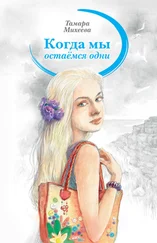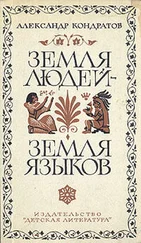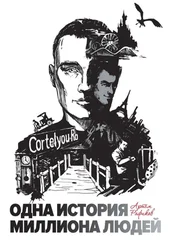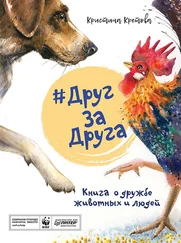C. S. Henshilwood, C. W. Marean. “The origin of modern human behavior: Critique of the models and their test implications”. Current Anthropology 44. 5. 2003, 627–652.
E. Hovers, S. Ilani, O. Bar-Yosef, B. Vandermeersch. “An early case of color symbolism. Ochre use by modern humans in Qafzeh Cave”. Current Anthropology 44. 2003, 492–522.
E. Hovers, Y. Rak, W. H. Kimbel. “Neanderthals of the Levant”. Archaeology 49. 1996, 49–50.
J.-J. Hublin. “Climatic changes, paleogeography, and the evolution of the Neandertals”. In T. Akazawa, K. Aoki, O. Bar-Yosef, eds. Neanderthals and Modern Humans in Western Asia , 295–310. Plenum, New York, 1998.
J.-J. Hublin. “The prehistory of compassion”. Proceedings of the National Academy of Sciences USA 106. 2009, 6429–6430.
A. Jerardino, C. W. Marean. “Shellfish gathering, marine palaeoecology and modern human behavior: Perspectives from cave PP13b, Pinnacle Point, South Africa”. Journal of Human Evolution 59. 3–4. 2010, 412–424.
R. G. Klein. “Out of Africa and the evolution of human behavior”. Evolutionary Anthropology 17. 2008, 267–281.
S. L. Kuhn, M. C. Stiner. “Body ornamentation as information technology: Towards an understanding of the significance of early beads”. In P. Mellars, K. Boyle, O. Bar-Yosef and C. Stringer, eds. Rethinking the Human Revolution , 45–54. McDonald Institute for Archaeological Research, Cambridge, 2007.
D. Lewis-Williams. The Mind in the Cave: Consciousness and the Origins of Art . Thames & Hudson, London, 2002.
S. J. Lycett, M. Collard, W. C. McGrew. “Phylogenetic analyses of behavior support existence of culture among wild chimpanzees”. Proceedings of the National Academy of Sciences USA 104. 2007, 45, 17588–17592.
C. W. Marean, M. Bar-Matthews, J. Bernatchez, J. Fisher, P. Goldberg, A. Herries, Z. Jacobs, A. Jerardino, P. Karkanas, T. Minichillo, P. J. Nilssen, E. Thompson, I. Watts, H. M. Williams. “Early human use of marine resources and pigment in South Africa during the Middle Pleistocene”. Nature 449. 2007, 905–908.
S. McBrearty. “Down with the revolution”. In P. Mellars, K. Boyle, O. Bar-Yosef, C. Stringer, eds. Rethinking the Human Revolution , 133–152. McDonald Institute for Archaeological Research, Cambridge, 2007.
S. McBrearty, A. Brooks. “The revolution that wasn’t: A new interpretation of the origin of modern human behavior”. Journal of Human Evolution 39. 2000, 453–563.
S. McBrearty, C. Stringer. “The coast in colour”. Nature 449. 2007, 793–794.
P. A. Mellars. “The impossible coincidence: A single-species model for the origins of modern human behavior in Europe”. Evolutionary Anthropology 14. 2005, 167–182.
P. A. Mellars. “Major issues in the emergence of modern humans”. Current Anthropology 30. 1989, 349–385.
P. A. Mellars. “Why did modern human populations disperse from Africa ca. 60,000 years ago? A new model”. Proceedings of the National Academy of Sciences USA 103. 2006, 9381–9386.
P. Mellars, K. Boyle, O. Bar-Yosef, C. Stringer, eds. Rethinking the Human Revolution . McDonald Institute for Archaeological Research, Cambridge, 2007.
P. A. Mellars, C. B. Stringer. “Introduction”. In P. A. Mellars, C. B. Stringer, eds. The Human Revolution: Behavioural and Biological Perspectives in the Origins of Modern Humans , 1–14. Edinburgh University Press, Edinburgh, 1989.
D. Morris. The Naked Ape . Jonathan Cape, London, 1967.
G. M. Morriss-Kay. “The evolution of human artistic creativity”. Journal of Anatomy 216. 2010, 158–176.
V. Mourre, P. Villa, C. S. Henshilwood. “Early use of pressure flaking on lithic artifacts at Blombos Cave, South Africa”. Science 330. 2011, 659–662.
A. Nowell. “Defining behavioral modernity in the context of Neandertal and anatomically modern human populations”. Annual Review of Anthropology 39. 2010, 437–452.
P. Pettitt. “The living as symbols, the dead as symbols: Problematising the scale and pace of hominin symbolic evolution”. In C. Henshilwood, F. d’Errico, eds. Homo Symbolicus: The Origins of Language, Symbolism and Belief. University of Bergen Press, Bergen, in press.
C. Power. “Society as congregation – religion as binding spectacle”. Radical Anthropology 1. 2007, 17–25.
G. Rizzolatti, M. Fabbri-Destro, L. Cattaneo. “Mirror neurons and their clinical relevance”. Nature Clinical Practice Neurology 5. 1. 2009, 24–34.
W. Roebroeks, J.-J. Hublin, K. MacDonald. “Continuities and discontinuities in Neandertal presence – a closer look at Northwestern Europe”. In N. Ashton, S. Lewis, C. B. Stringer, eds. The Ancient Human Occupation of Britain , 113–123. Elsevier, Amsterdam, 2011.
C. B. Stringer. Homo britannicus . Allen Lane, London, 2006.
C. B. Stringer, E. Trinkaus, M. Roberts, S. Parfitt, R. Macphail. “The Middle Pleistocene human tibia from Boxgrove”. Journal of Human Evolution 34. 1998, 509–547.
J. Svoboda. “The Upper Paleolithic burial sites at Predmosti: Ritual and taphonomy”. Journal of Human Evolution 54. 2008, 15–33.
H. Thieme. “Lower Palaeolithic hunting spears from Germany”. Nature 385. 1997, 807–810.
H. Valladas, J.-L. Joron, G. Valadas, B. Arensburg, O. Bar-Yosef, A. Belfer-Cohen, P. Goldberg et al. “Thermoluminescence dates for the Neanderthal burial site at Kebara in Israel”. Nature 330. 1987, 159–160.
M. Vanhaeren, F. d’Errico. “Aurignacian ethnolinguistic geography of Europe revealed by personal ornaments”. Journal of Archaeological Science 33. 2006, 1105–1128.
M. Vanhaeren, F. d’Errico, C. Stringer, S. James, J. Todd, H. Mienis. “Middle Paleolithic shell beads in Israel and Algeria”. Science 312. 2006, 1785–1788.
P. Villa. “On the evidence for Neanderthal burial”. Current Anthropology 30. 1989, 325–326.
I. Watts. “Was there a human revolution?” Radical Anthropology 4. 2010, 16–21.
R. White. Prehistoric Art: The Symbolic Journey of Humankind . Harry N. Abrams, New York, 2003.
R. White. “Systems of personal ornamentation in the Early Upper Palaeolithic: Methodological challenges and new observations”. In P. Mellars, K. Boyle, O. Bar-Yosef, C. Stringer, eds. Rethinking the Human Revolution , 287–302. McDonald Institute for Archaeological Research, Cambridge, 2007.
A. Whiten. “The place of ‘deep social mind’ in the evolution of human nature”. In C. Pasternak, ed. What Makes Us Human , 146–163. Oneworld Publications, Oxford, 2007.
A. Whiten, R. Hinde, C. Stringer, K. Laland, eds. Culture Evolves . Oxford University Press, Oxford, in press.
J. Wilkins. “Style, symboling, and interaction in Middle Stone Age societies”. Vis-a-vis: Explorations in Anthropology 10. 1. 2010, 102–125.
L. Wolpert. “Causal belief makes us human”. In C. Pasternak, ed. What Makes Us Human , 164–181. Oneworld Publications, Oxford, 2007.
Глава 6. Современное поведение: технологии и образ жизни
J. M. Adavasio, O. Soffer, D. C. Hyland, J. S. Illingworth, B. Klima, J. Svoboda. “Perishable industries from Dolni Vĕstonice I: New insights into the nature and origin of the Gravettian”. Archaeology, Ethnology and Anthropology of Eurasia 2. 2001, 48–65.
L. C. Aiello, R. I. M. Dunbar. “Neocortex size, group size, and the evolution of language”. Current Anthropology 34. 2. 1993, 184–193.
Читать дальше
Конец ознакомительного отрывка
Купить книгу












